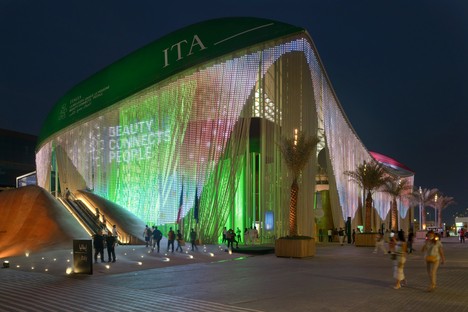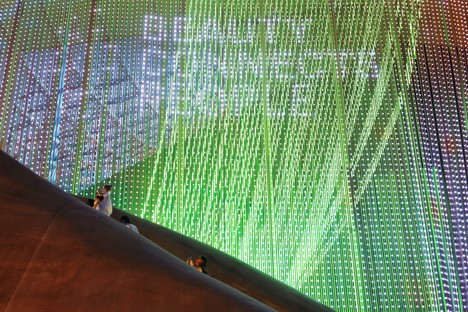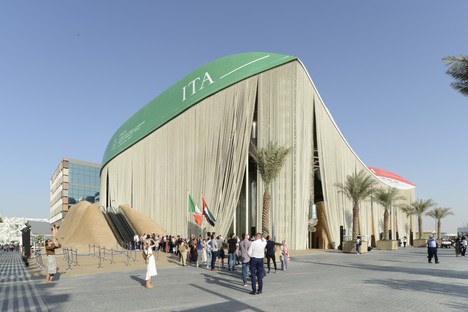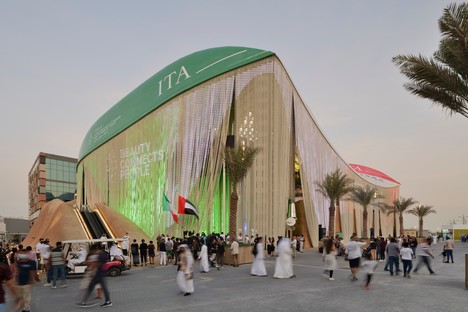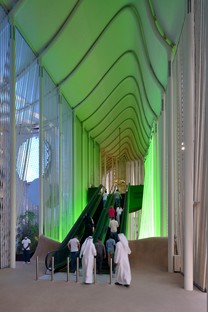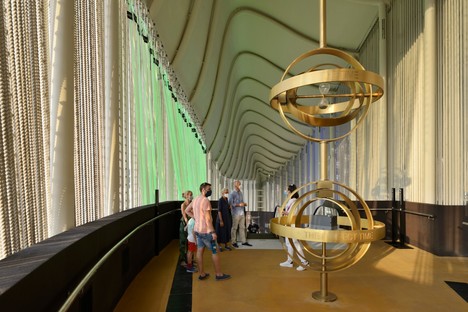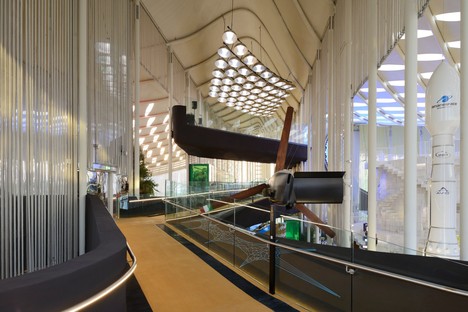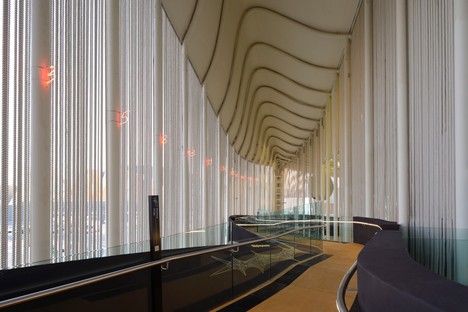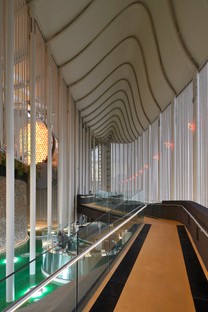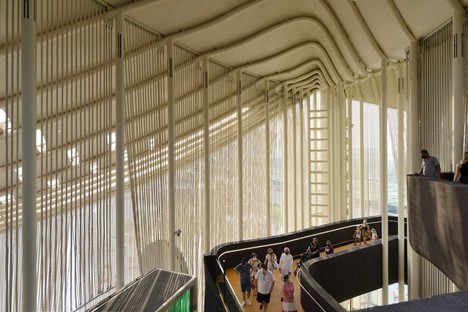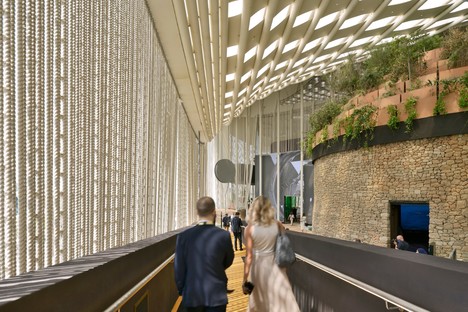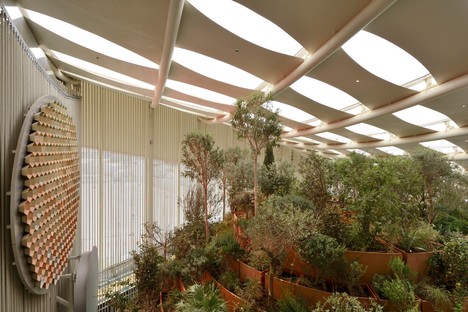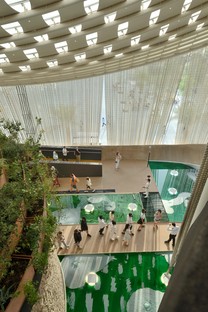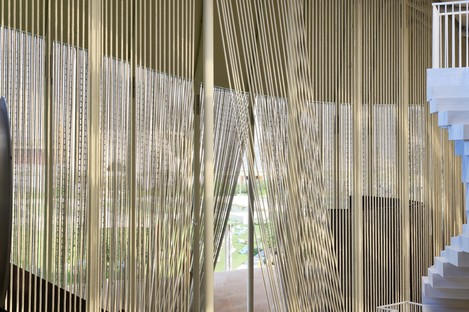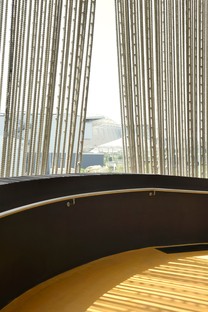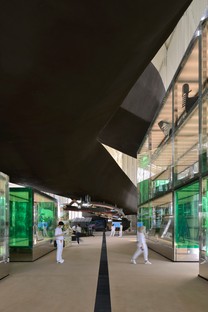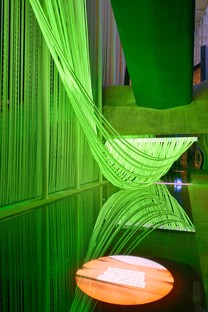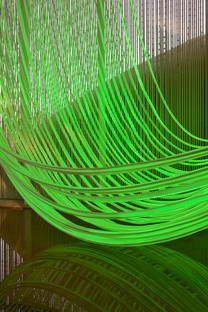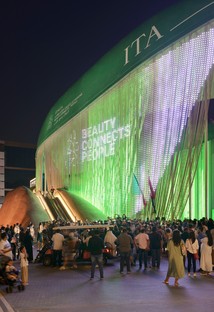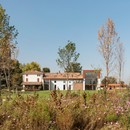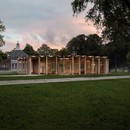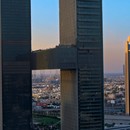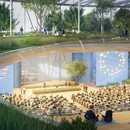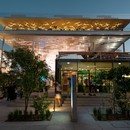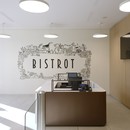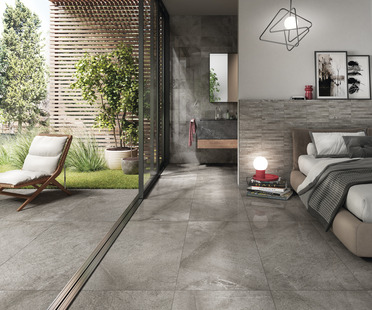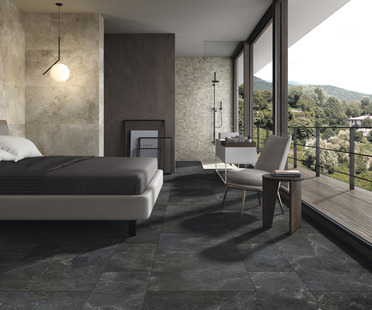13-10-2021
Moving Architecture – the Italian Pavilion at Expo Dubai 2020
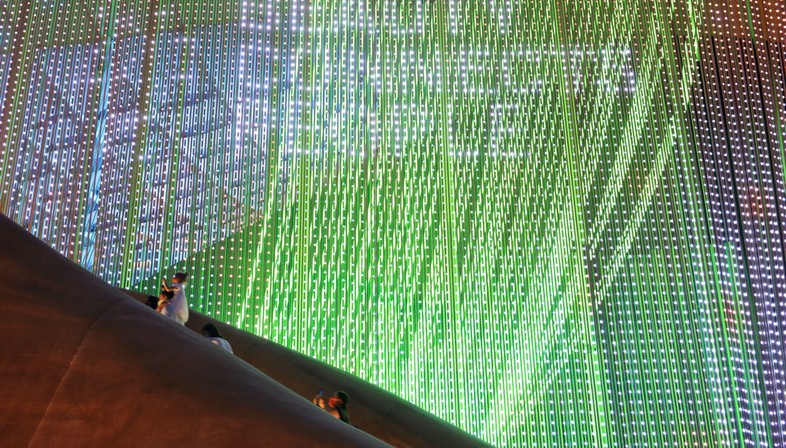
On October 1 the Expo Dubai 2020 entitled "Connecting minds, creating the future" was officially inaugurated, the first World’s Fair organised in the Arab world, postponed by a year due to the Covid-19 pandemic. The pavilions of the various participating countries have been unveiled and, of course, our journey through the architectures created begins with the Italian national participation entitled "Beauty connects people" presented in the Italian Pavilion, a project designed by the CRA-Carlo Ratti Associati and Italo Rota Building Office, with Matteo Gatto and F&M Ingegneria.
The Italian Pavilion covers an area of over 3500 square metres and has been defined by its designers as "Moving architecture", a project that presents itself to the public as an experiment into reconfigurable architecture and circularity.
Two examples of reuse immediately stand out from the outside of the pavilion structure, playing right into these concepts, so dear to sustainability.
The first is the structure's roofthree hulls of life-size boats, measuring from 40 to 50 metres in length and painted in the colours of the Italian flag (green, white and red), the largest "tricolour" in the country's history as it extends over 2,100 square meters. The three hulls – which in fact would be perfectly capable of setting sail after the event – are supported by more than 150 slender steel pillars, each standing 27 meters high. The pillars also support a wave-shaped roof membrane responsible for modulating the intensity of natural light that penetrates the pavilion.
The second example is the multimedia curtain façade, made of nautical ropes produced with recycled plastic, equivalent to about 2 million plastic bottles. LEDs that illuminate and give dynamism and a multimedia aspect to the façade have been incorporated into the ropes.
Innovation and experimentation animate the whole structure. Indeed, unusual and original construction materials have been used throughout the project, the result of a great deal of research: from algae to coffee grounds, from orange peels to sand. At the technological level, an advanced nebuliser-based climate mitigation system has been used, which offers a sustainable alternative to air conditioning.
Thanks to the external escalator, visitors are led to the beginning of the exhibition path, located inside the pavilion and standing 11 metres above ground. From this panoramic point, visitors are able to directly observe everything below and walk along a walkway suspended over the exhibition spaces and the installations. Inside the pavilion, some of the main spaces to highlight include: the Belvedere, a round structure topped by a dome and covered in wild plants typical of the Mediterranean scrub, which pays homage to classic Italian Renaissance gardens; the Innovation Space dedicated to technological innovation; the “Second Sun” and “Second Moon” digital installations, designed to transform visitors’ emotions into light effects in real time; as well as the “Theatre of Memory”, where a 3D-printed copy of Michelangelo’s David is exhibited, created by the Galleria dell'Accademia of Florence and the Ministry of Culture in partnership with the Department of Civil and Environmental Engineering at the University of Florence. The itinerary concludes on the ground floor with the “Solar Coffee Garden”, a café designed by the CRA-Carlo Ratti Associati and Italo Rota studios for Lavazza.
(Agnese Bifulco)
Images courtesy of CRA-Carlo Ratti Associati, photos by Michele Nastasi
Project Name: Italian Pavilion at Expo Dubai 2020
Location: Dubai, UAE
Date: October 1, 2021 to March 31, 2022
Architecture design:
CRA-Carlo Ratti Associati and Italo Rota Building Office, with Matteo Gatto and F&M Ingegneria
Photo credits: Michele Nastasi
CRA team:
Carlo Ratti, Francesco Strocchio (Project manager), Monika Löve (Project manager), Luca Bussolino, Mario Daudo, Serena Giardina, Ina Sefgjini, Nicola Scaramuzza, Giovanni Trogu
CRA Graphic Team: Gary di Silvio, Pasquale Milieri, Gianluca Zimbardi
Past team members: Saverio Panata, Andrea Fasolo, Alberto Geuna, Gerolamo Gnecchi, Francesca Marino, Lucia Miglietta, Marco Maria Pedrazzo, Davide Ventura
Italo Rota Building Office team:
Italo Rota, Francesca Grassi
Past team members: Francesco Lato, Omid Mohammad, Gilberto Piano, Sammy Zarka
Matteo Gatto team:
Matteo Gatto, Stefano Monaco, Barbara Corli, Valentina Rizzo
Past team members: Paolo del Toro, Edoardo Perani
F&M Ingegneria team:
Sandro Favero, Federico Zaggia, Luigi Ranzato, Lorenzo Colarusso, Nicola Ros, Federico Moro, Antonio Nuzzo, Mauro Baessato, Davide Pizzolato, Dino Casagrande, Marco Furlanetto.
Past team members: Francesca Favero, Luca De Antoni, Dhebora Gambaro, Francesco Mason, Alessandro Palamidese, Luca Sangiorgi, Paola Zisa, Mirco Zuin, Alessandro Bonaventura, Marco Bonaldo, Francesca Bertuzzo.
Scenography design consultant: Alessandro Camera
Video and Multimedia Consultant: AGMultivision (Tiziano Alessandro Testoni)
Lighting Design Consultant: Luminae Lighting Design (Lorenzo Bruscaglioni)
Sound Design Consultant: P2A Design (Alessandro Pasini, Simone Fagnani, Paola Renda)
Wayfinding Consultant: 100km studio (Luigi Farrauto)
Graphic Consultant: studio FM milano
Landscape Consultant: CNR (Silvia Fineschi, Roberto Reali, Francesco Carimi), GMP Studio (Flavio Pollano, Rachele Griffa)










